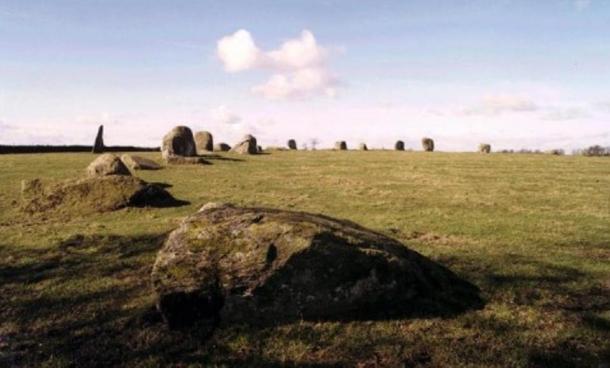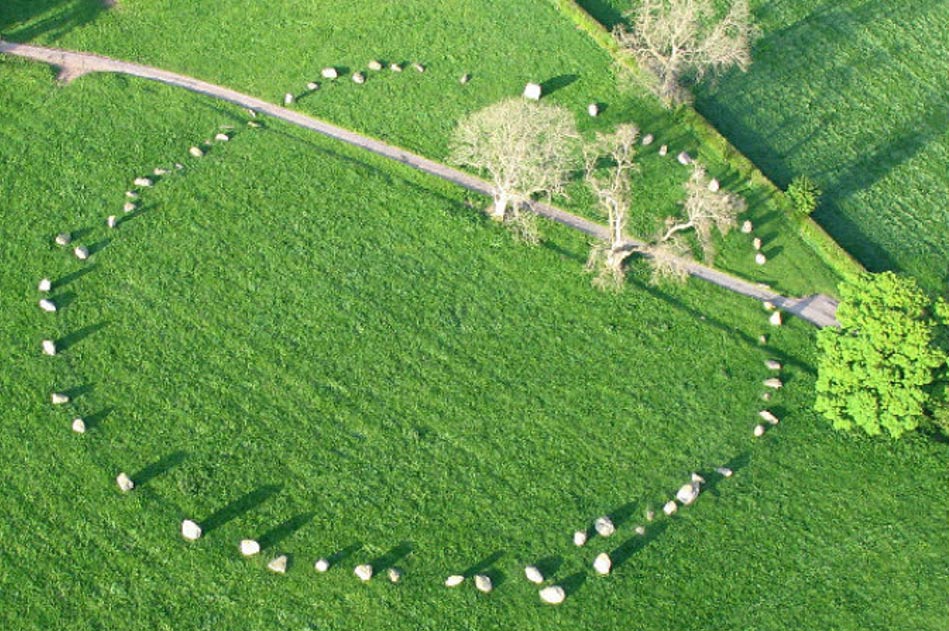The Legend of the Stone Circle known as Long Meg and Her Daughters
By April Holloway | The Epoch Times
Despite their pervasiveness throughout the world, with thousands scattered across Britain and Europe alone, stone circles never cease to arouse awe and intrigue in those who gaze upon them. Perhaps it is the realization of the sheer effort that would have gone into their assembly, or the fact that, despite centuries of research, we are really no closer to unraveling their mysteries. Long Meg and Her Daughters, as it is curiously named, is one such stone circle, situated within a picturesque landscape in Cumbria, England, and steeped in centuries of folklore and legend.
While there are more than 1,300 stone circles in the British Isles, 18th century Cumbrian poet William Wordsworth wrote that after Stonehenge, Long Meg and Her Daughters “is beyond dispute the most notable relic that this or probably any other country contains.” His admiration for the stone circle is clearly expressed in his poem, “The Monument Commonly Called Long Meg and Her Daughters,” 1833:
A weight of awe, not easy to be borne,
Fell suddenly upon my spirit, cast
From the dread bosom of the unknown past
When first I saw that family forlorn..
Speak Thou, whose massy strength and stature scorn
The power of years—pre-eminent, and placed
Apart, to overlook the circle vast.
Speak Giant-mother!
While Wordsworth may have been somewhat biased by his love for his native land of Cumbria, there is no doubt that the stone circle is something special. Long Meg and Her Daughters is the second largest stone circle in England, and the sixth biggest example known in Europe, and despite the fact that at least 3,500 years have passed since its construction, it has survived the passage of time extraordinarily well.

Long Meg and Her Daughers (Martin McCarthy/Wikimedia Commons)
Long Meg and Her Daughters consists of 59 megalithic stones arranged in an oval shape measuring 100 meters on its long axis. Written records from the early 17th century suggest that there were as many as 77 megaliths at that time.
Long Meg is the tallest and most famous stone in the circle, measuring 12.5 feet (3.8) meters in height and situated 109 yards (25 meters) outside the circle positioned towards the southwest, where (when standing in the center of the circle) the midwinter sun would have set.

Long Meg, a 12.5-foot (3.8-meter) high monolith of red sandstone standing about 109 yards (25 meters) from the circle of the “daughter” stones. (Paul Farmer/Wikimedia Commons)
The monolith is of local red sandstone, quarried from the banks of the River Eden nearly 2 miles away, and is engraved with mysterious symbols, including cup and ring marks, a spiral, and rings of concentric circles.
Archaeologists suggest that Long Meg and Her Daughters was once used as a meeting place, at certain significant times of the year, possibly for religious rituals or ceremonies. It is known from the alignments that the Long Meg stones were involved in both solar and lunar predictions. However, exactly what the predictions were used for and what went on inside the circle thousands of years ago remains a mystery.

Image of one of three “cup and ring” markings on the Long Meg Bronze Age standing stone. (Wikimedia Commons)
The Legend of Long Meg
According to folkloric stories going back many centuries, Long Meg was a witch named “Meg of Meldon,” who, along with her daughters, was turned to stone for profaning the Sabbath as they danced wildly on the moor. Some believe that from a certain angle, the Long Meg monolith even resembles the profile of a witch.
“Legend tells that the stones were originally a coven of witches, turned to stone by the Scottish wizard Michael Scott,” writes Mysterious Britain. “This legend is common throughout Britain with variation, stone circles have been petrified sinners, wedding parties and giants.”

A plaque depicting the legend of Long Meg and her daughters; a coven of witches dancing on the moor before they were cast into stone. (Humphrey Bolton/Wikimedia Commons)
Many say that the stone circle is imbued with magic and that it is impossible to count the same number of stones twice. If this is achieved, legend says that the wizard’s spell will finally be broken.
“Even today the stones have the power to attract worship, many of the trees surrounding the site have been used as the depositories of offerings,” writes Mysterious Britain. “On our visit many objects had been left dangling from the trees wrapped in cloth, their contents unknown, but one would hope not too sinister.”
Featured image: Long Meg and Her Daughters, Eden Valley, Cumbria. (Simon Ledingham/Wikimedia Commons)
The article ‘The Legend of the Stone Circle known as Long Meg and Her Daughters’ was originally published on The Epoch Times and has been republished with permission.




















Comments
Hello All,
I'm going to say that I believe the structures were built by Giant's based on what I've been reading in The Bible.
The Bible says that Giants grew to be as tall like that of Cedar Trees which is said too grow 100 feet.
Those Giants must have been really strong.
So until next time Everyone Goodbye!
Great article. The Legend that the witches were punished for ‘proganing’ the Sabbat is strange – is the word ‘Sabbat’ meant to mean one of the eight pagan sabbats celebrated during the time of the Celts, or is it used in its more ‘modern’ appellative meaning Sunday? I don’t think so since the stones were constructed much earlier than Christianity. Witches and/or pagan priests used to conduct rituals at these stones, as they did at Stonehenge and Glastonbury circles. It is therefore strange that they are condemned as having desecrated them. Something to ponder.
- Moonsong
--------------------------------------------
A dreamer is one who can only find his way by moonlight, and his punishment is that he sees the dawn before the rest of the world ~ Oscar Wilde
Many thanks for this article – one of my favourite of all stone circles. Particularly liked the inclusion of the Wordsworth quote. I first saw the circle at sunset on a winters day (very close to midwinter’s day,) approaching it along the processional way after a long walk. It was an awe-inspiring and humbling experience. A beautiful sight, and a wonderful stone circle.
Sculptures, carvings & artwork inspired by a love of history & nature: www.justbod.co.uk